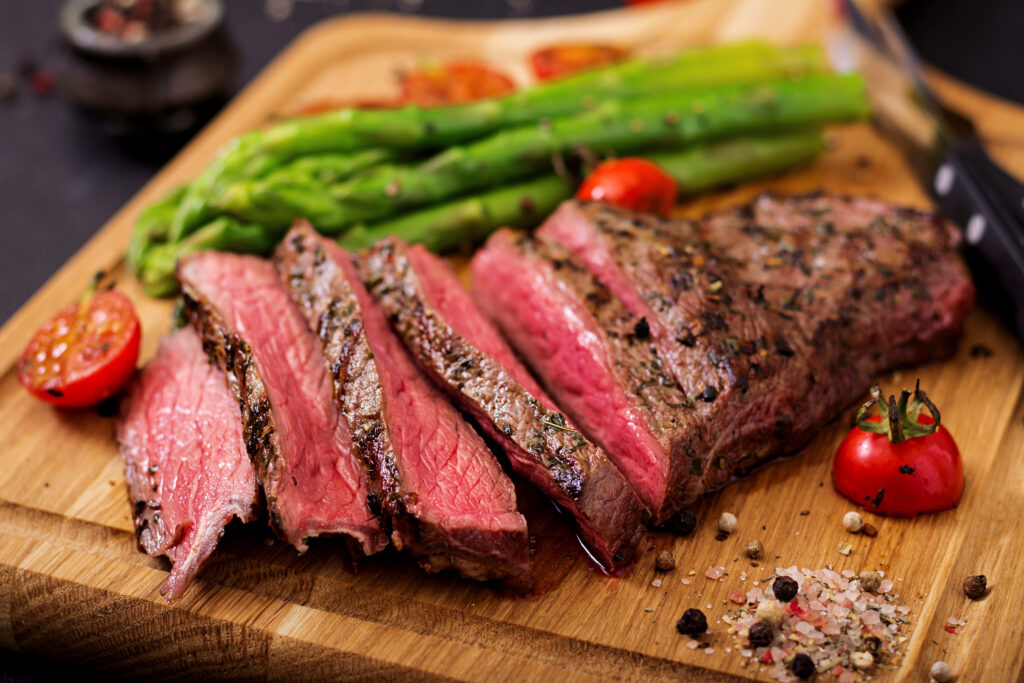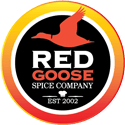Roasting, Seasoning Blends, Spice Blends
Savvy Holiday Roasting Tips
Holiday time is ROASTING time.
Whether your traditional holiday favorite roast is a turkey, prime rib, a ham, or perhaps a fancy crown rack of lamb, roasts are relatively simple to prepare, and a dramatic central focal point to any holiday table.

Roasting is a recommended cooking method for tender cuts of meat. To roast, the meat is placed on a rack in a shallow, uncovered pan and is cooked by the indirect dry heat of an oven. To keep the meat tender and to minimize shrinkage due to the evaporation of moisture, a moderately slow oven temperature of 325 °F to 350 F is most commonly recommended.
How much to buy?
If the roast you choose is bone-in, say for example a whole turkey, a bone-in prime rib or a leg of lamb, you typically need to plan for at least 1 lb. of uncooked roast per person to arrive at a finished portion size of 8-ounce servings.
For a boneless roast, such as a boneless rib eye or beef tenderloin, ¾ lb. of uncooked roast will give you a similar result per person. Of course, you should always consider going a little on the “high side” of this estimate as you may have guests who prefer a little more, or, wish a piece which is more or less well done, which requires more meat to choose from to accommodate their request.
Caring for your roast.

Unlike a beef tenderloin, most roasts come from areas that have a bit of a fat covering. Leaving a modest layer of external fat on steaks and roasts during cooking preserves their juiciness and adds additional flavor from the salinity of the fat.
Internal fat (called marbling), is also important. Look for roasts to have small specks of white fat, evenly distributed throughout the meat. This fat melts into the meat while roasting and contributes to tenderness as well as much better result overall.
Meats with very little marbling will be drier, tougher and less flavorful. Trim excessive external fat aftercooking. Also, it’s a good idea to pat your roasts dry with paper towels, then lightly spray with vegetable oil before seasoning. This will promote browning and give you better color and flavor.
Marinades, rubs and seasonings
Heavily salting the exterior of your roasts before roasting won’t do much for the interior meat and, will also diminish the amount of browning you’ll get. In addition, if you intend to make a sauce, gravy or jus from the drippings, you may find the liquid too salty to enjoy as the salt will dissolve into the juices which drip off the roast while cooking.
Generally speaking, herbs and spices with a small amount of salt is the best practice and you can then add whatever additional salt you wish AFTER the meat has been carved from the roast.
Marinades, similar to brines are seasoned liquids that add flavor and in some cases, also tenderize.
Marinades are not essential to a tender and flavorful roast but they can ensure a better outcome while at the same time adding additional flavor. They are most often used with pork roasts and poultry such as chicken and turkey. The idea is that the marinade is absorbed into the flesh adding flavors while super hydrating it with a salinity similar to its natural juices so that once roasted, it’s remains juicy and tender throughout.
A tenderizing marinade contains an acidic ingredient such as lemon juice, yogurt, wine or vinegar, or a natural tenderizing enzyme found in fresh papaya, ginger, pineapple and figs. The idea here is that the acids break down the connective tissues making the roasted meats more tender.
Rubs are a blend of dry seasonings such as fresh or dried herbs and spices. They are applied to the surface of uncooked roasts and use the exterior, moisture of the meat to dissolve and transmit their flavor. Rubs, once applied, need resting time to perform their seasoning magic. Paste-type rubs often contain some oil, crushed garlic or mustard. In the end, both marinades and rubs are optional, additional flavoring components and used primarily for their flavor.
Searing is another great tip.
Searing is the technique of initially browning the exterior of a roast before cooking it in the oven. Searing a roast first, in a hot skillet, improves its color and flavor. It’s a particularly good technique for small roasts or very lean cuts of beef or lamb that only need a short cooking time. In addition, and perhaps most important, searing helps to seal the meats exterior shell and lock in the flavorful juices of the roast.
Roasting equipment.
When roasting, a roasting pan with a built-in rack which keeps the meat off the bottom of the pan is a good choice. It allows for full circulation of the hot air around the meat and keeps the bottom of the roast from simmering in its own juices. Your finished roast will cook more evenly and it will have better color.
A broiler pan, with slots to allow fat to drip away during cooking, is a second option. However, avoid aluminum and cast-iron pans as they are reactive metals which means that they can affect the taste and color of dishes that contain acidic ingredients.

Thermometers are an essential and almost fool proof method of checking for doneness. Choose an INSTANT READ thermometer with the smallest diameter probe needle you can find. Instant read thermometers read the temperatures must faster than their larger, bulkier cousins and leave much smaller puncture holes, which is important. Puncture holes in meats are like faucets, draining essential juices out of the meat, and that’s not a good thing.
How long and at what temperature?
It’s one of the most common questions asked in the cooking world.
Unfortunately, it’s also the most complicated question to answer as there are so many variables. Among them is the size of the roast, bone-in or boneless, initial temperature of the meat, how many other dishes or foods that might be in the same oven at the same time? Is the roast being stuffed? How many times are you going to open the oven door to check up on your roast?
And even after all these questions are answered, is the oven’s temperature accurately calibrated?
One person’s 325 F might be another’s 360 F?
Using a clock and an oven temperature to “guess” when your roast will be done is a dangerous concept. It may perhaps, give you a very general idea based on its size, the oven temperature and a time per pound chart but that will only get you in the “ball park” of at least knowing when you should begin to actually check the internal temperature of your meats doneness with a thermometer.
Measuring doneness with a thermometer is THE only accurate way to cook your meat to the doneness you prefer. Below is a chart to help you know what that temperature is.
Carry-over cooking & resting.
Carry over cooking is the phenomenon of heat momentum. Whether in a microwave or conventional oven, food will still continue to cook a bit after it is removed from the heat source. The cooking that takes place after the food is removed from the oven is called “carry-over” cooking.
Food should be removed from the oven, (undercooked by 5 to 10 degrees depending on the roasts’ density), and allowed to rest outside of the oven for 10 to 15 minutes. The internal temperature will rise by 5 to 10 degrees during the resting period and be ready to serve.
For example:
Rare: Remove from oven at 125F. Temperature will rise to 135F in 10-15 minutes. Medium Rare: Remove from oven at 130F. Temperature will rise to 140F in 10-15 minutes. Medium: Remove from oven at 140F. Temperature will rise to 150F in 10-15 minutes. Medium Well: Remove from oven at 145F. Temperature will rise to 155F in 10-15 minutes.
Resting
While in the oven, the meat’s juices have been driven, by heat, to the interior of the roast. This resting (or bench time), is an important last step in the roasting process. Resting the roast allows time for those juices to be re-absorbed by the whole roast, resulting in a uniformly juicy and moist portion from edge to edge.

USDA Guidelines on Roasting Temperatures
www.usda.gov/media/blog/2011/05/25/cooking-meat-check-new-recommended-temperatures
USDA Meat and Poultry Roasting Chart from FoodSafety.Gov




